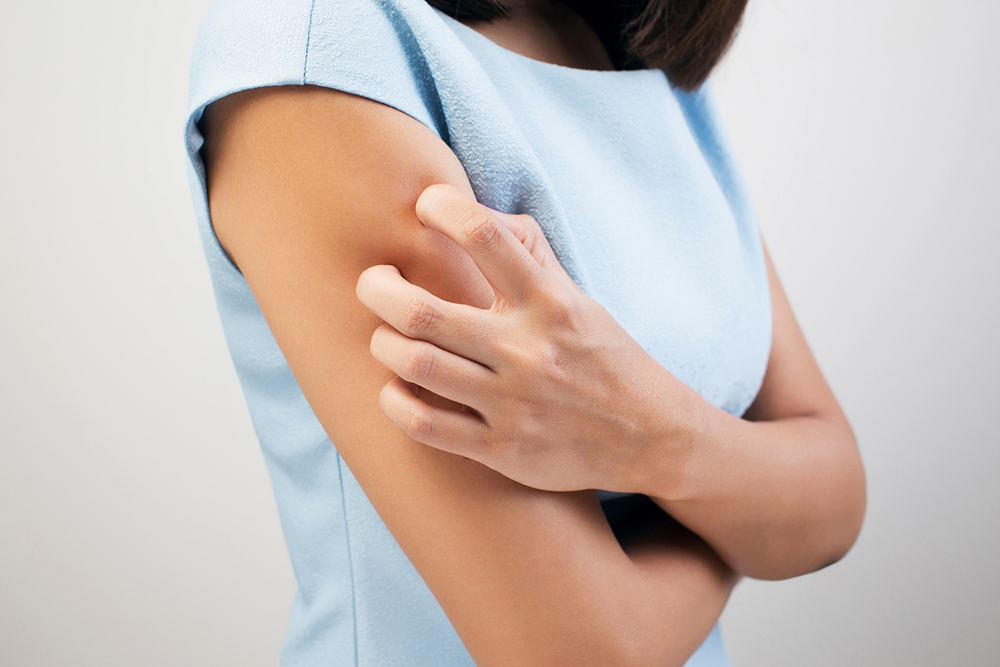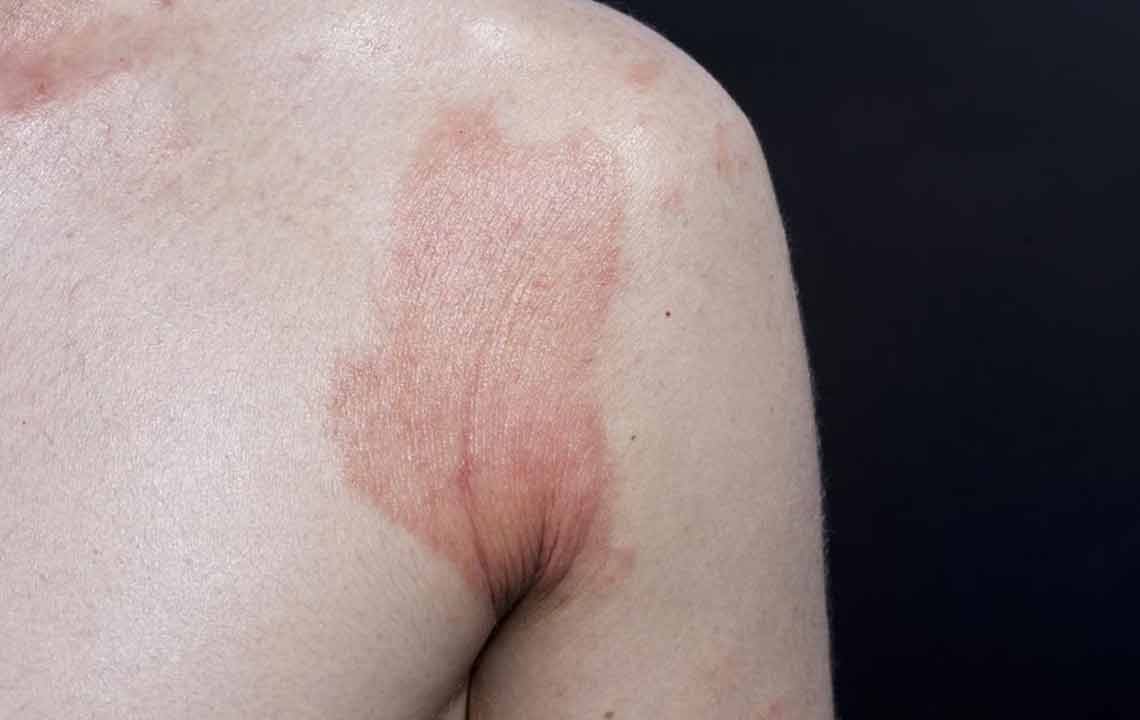How to Get Rid of Skin Mites
Mites are tiny bugs that can cause skin infestations if left unchecked. Some forms of mites, such as Demodex mites and Sarcoptes scabiei, may latch on, bite, or burrow inside the skin. This can lead to contagious health conditions like demodicosis and scabies, which may trigger symptoms like burning sensations, itchiness, redness, and skin roughness. Individuals infected by mites on the skin might need to speak to an expert who may recommend various management strategies.

Common management options
Many people naturally face tiny mites on their skin, such as Demodex mites or Sarcoptes scabiei (itch mites). Usually, these mites do not cause any problems and mostly do not require treatment. But if the presence of mites on the skin becomes uncontrollable and starts causing the onset of symptoms, a healthcare practitioner may recommend common management options to get rid of skin mites in humans. Typically, this involves using creams, gels, lotions, or a specialized wash containing specific ingredients that can eliminate mites.
Prevention of mite infections
In addition to the management options above, one can even follow other methods to reduce the risk of infections.
In the case of face mites, a healthcare expert might recommend various tips to get rid of them naturally, which include-
- Washing the hair and eyelashes daily with a mild shampoo
- Avoiding oil-based personal care products
- Exfoliating regularly to remove dead cells
- Avoid rubbing or scratching the face regularly
- Removing excess oil on the skin by washing the face twice daily
- Refraining from sharing makeup or face products
- Washing potentially shared items like towels and bedding regularly
Those who develop scabies due to skin mites like Sarcoptes scabiei can try a range of natural remedies to eliminate the infestation and ease symptoms.
1. Oatmeal baths
A great way to soothe itchy skin is to try an oatmeal bath. The process helps reduce inflammation and control the itch associated with scabies.
2. Tea tree oil
This oil can be an effective way to manage mites. All one has to do is add a couple of tea tree oil drops to a spray bottle and apply the solution to the bedding. Although it may not be effective against the eggs buried deep within the skin, this solution can help manage itching and promote the healing of any rashes on the skin.
3. Neem
Neem oil or neem-based products such as soaps and creams are effective in eliminating mites. This is due to their anti-inflammatory, antibacterial, and analgesic properties. Neem Concentrations ranging between 20% and 60% have been found to weaken the exoskeleton of scabies mites.
4. Aloe vera
The gel derived from aloe vera contains a soothing, healing effect on sunburned skin and can also get rid of scabies and associated symptoms like itching.
5. Cayenne pepper
The use of cayenne pepper is believed to help relieve the pain caused by scabies and potentially eliminate the scabies mites. This is because the pepper contains capsaicin—a compound that can desensitize the skin’s nerves when applied topically. It is important to go through a skin patch test before using cayenne pepper as it may cause skin reactions in some individuals.
6. Clove oil
One could also use clove oil to their advantage as it offers antimicrobial and antioxidative properties, contributing to its remarkable healing potential. Research indicates that clove oil is effective in eliminating scabies and other types of mites. This is because clove oil contains eugenol—a component that can damage the exoskeleton and gut of scabies mites.
7. Cold compress
Placing a cold compress on the skin may help reduce itchiness. So try applying an ice pack or a cool, damp washcloth on areas of the body that are specifically itchy for quick relief.
8. Avoid soap
Soap can irritate the skin, especially in those affected by skin mites that cause scabies. So, instead of using this cleansing agent, one should wash the affected areas with water when the skin is inflamed.
Tips to reduce the risk of skin mites and infection
To minimize the risk of skin mites and their related infections or symptoms, one can implement certain tips. These tips may not directly treat the skin, but they can effectively reduce mite infestations overall.
1. Wash clothes in hot water
Washing clothes, bedding, or other upholstery fabrics that have come in contact with mites or skin can help remove the critters hiding in the fabric. Doing so will help prevent them from spreading to other areas of the body or to other people.
2. Vacuum regularly
Infestation of mites is not limited to the human skin; these tiny bugs can also be found in floor coverings, such as carpets. Regular vacuuming of these surfaces can help reduce the number of critters at home, which in turn can help alleviate symptoms over time. Further, consistent vacuuming may play a major role in preventing the spread of scabies.
3. Request family members to follow management options
Ensure that every occupant in the household adheres to the recommended management strategies for treating skin mite infections such as scabies. Keep in mind that scabies can be asymptomatic, meaning that a family member may not display any signs or symptoms. Despite this, it’s important that all family members utilize the appropriate remedies to get rid of the mites.
4. Seek expert help
Even after trying various methods, it is possible to remain susceptible to infections and experience symptoms despite ongoing treatments. In such cases, it is important to consult a doctor about any complications. By doing so, the expert can conduct a thorough diagnosis and provide suitable solutions to manage any complications arising from skin mite infestations.




